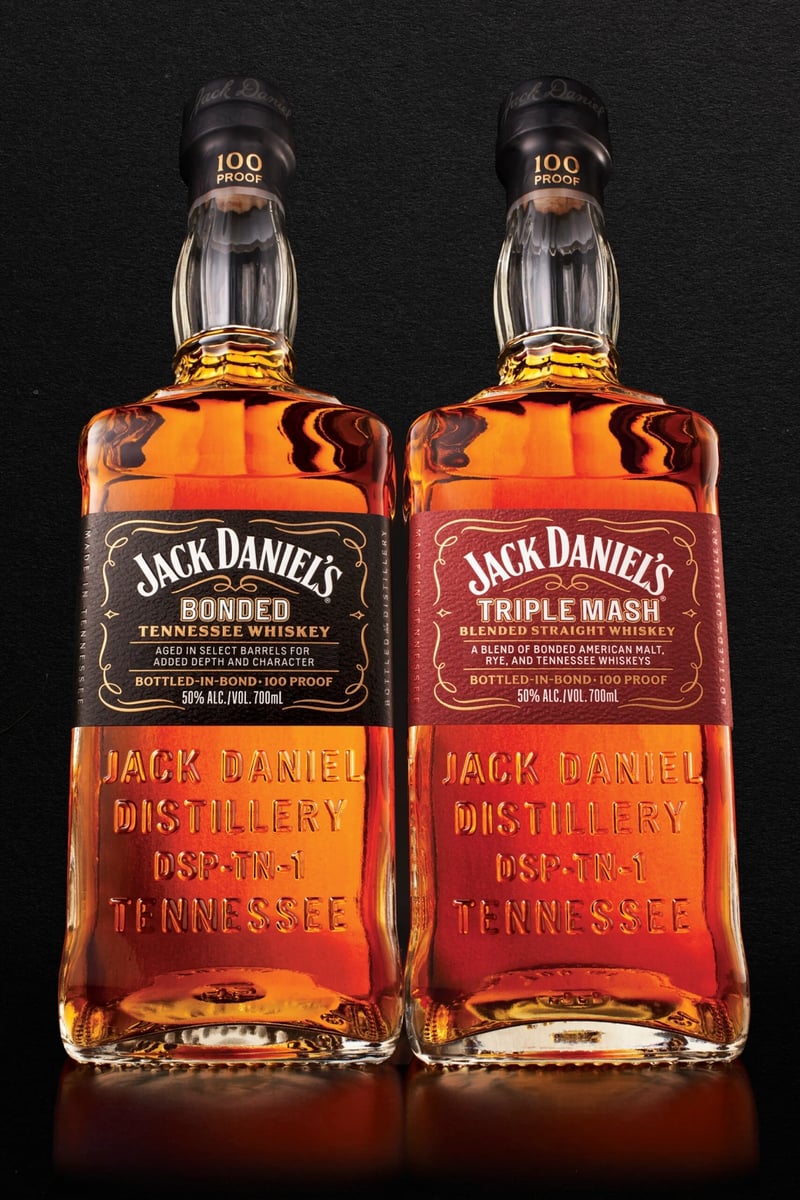This month, direct from Lynchburg (Tennessee), iconic American distiller Jack Daniel’s is unveiling its latest release aimed squarely at whiskey enthusiasts — The Triple Mash.
Part of Jack Daniel’s premium Bonded Series (described by the brand as its ode to “exceptional American whiskey”), this expression is a showcase of three malt & grain spirits that have all been ‘bottled-in-bond’.
Filled with the hallmarks of Jack’s legendary style — a honeyed sweetness, rye-spice, and just a touch of dry oak — Triple Mash was crafted especially with elevated drinking in mind. Make no mistake: this expression is every inch the slice of superlative craft you’ll find in Japan or Central Kentucky.
Whether you prefer it neat, on the rocks or as a game-changing base for your favourite cocktail (we’d suggest a Paper Plane), Triple Mash’s versatile deliciousness flows out of its ‘bonded’ status: a kind of historic seal of quality, very much still relevant in 2024, that we get into below.
RELATED: The 12 Best Whisky Glasses To Elevate Your Drop In 2024
‘Bottled-In-Bond’: A Historical Legacy & Assurance Of Quality

Named for the Bottled In Bond Act first introduced by America’s federal government in 1897, it’s helpful to draw a parallel between this piece of legislation and similar European consumer protections — like the rules of the Cognac AOC or Scotch Whisky Regulations.
First enacted in response to pressure from whiskey distillers in the state of Kentucky, the Bottled In Bond Act has gone on to achieve widespread applicability throughout the USA over the past two centuries.

This means whiskey made as far afield as New York, or in this case Tennessee, can attain ‘bonded’ status, so long as it clears the following — and in practice, thoroughly difficult — hurdles:
- Distilled by a single distiller, in a single distilling season;
- Matured for a minimum of four years in a government-bonded warehouse;
- Bottled at “100 proof” (i.e. 50% ABV).
It’s no small feat that Jack Daniel’s Triple Mash manages to satisfy all of these requirements, thus meriting description as a bonded whiskey of superior quality. But meeting these legal prescriptions is only half the tale, as Chris Fletcher, Master Distiller of Jack Daniel’s, reveals below.
Tasting The Jack Daniel’s Difference


Now having some handle on the challenge involved in crafting a bonded whiskey, it’s clear just how impressive it is that Triple Mash contains not one, but three individually bonded expressions.
The biggest percentage is accounted for by the brand’s Bonded Rye (60%), whereas the remainder is split between Bonded American Malt Whiskey (20%) and, crucially, Bonded Tennessee Whiskey — the very first release in the Bonded Series.
A generous helping of the original Bonded whiskey, present in the Triple Mash, is crucial to achieving this new release’s lengthy rounded finish. Additionally, as with every other expression in the Jack Daniel’s family — down to the iconic, square-bottled ‘Old No. 7’ — Triple Mash benefits from a charcoal-mellowing process following distillation, and before the whiskey’s 4-year nap in white oak barrels.

Known among Fletcher and Lynchburg locals as the “extra blessing”, charcoal mellowing is a process that is synonymous with Jack Daniel’s. New make spirit, registering at 140 proof (70% ABV), is fed and mellowed, drop by drop, through a series of vats filled with sugar maple charcoal.
Over the course of a painstaking three-to-five-day journey, the liquid achieves an extremely smooth dimension — with the added benefit of readying it to receive the darker, richer, wood-driven influences of the brand’s oak barrels. Coopered and charred in-house of course.
“[It’s] the culmination of over 150 years of experience in creating the highest quality whiskeys possible,” says Fletcher.
“By drawing on this rich heritage, we’ve managed to create an extraordinary bottled-in-bond straight whiskey that only Jack Daniel’s could make.”
This article is presented in partnership with Jack Daniels. Thank you for supporting the brands who support Boss Hunting.












